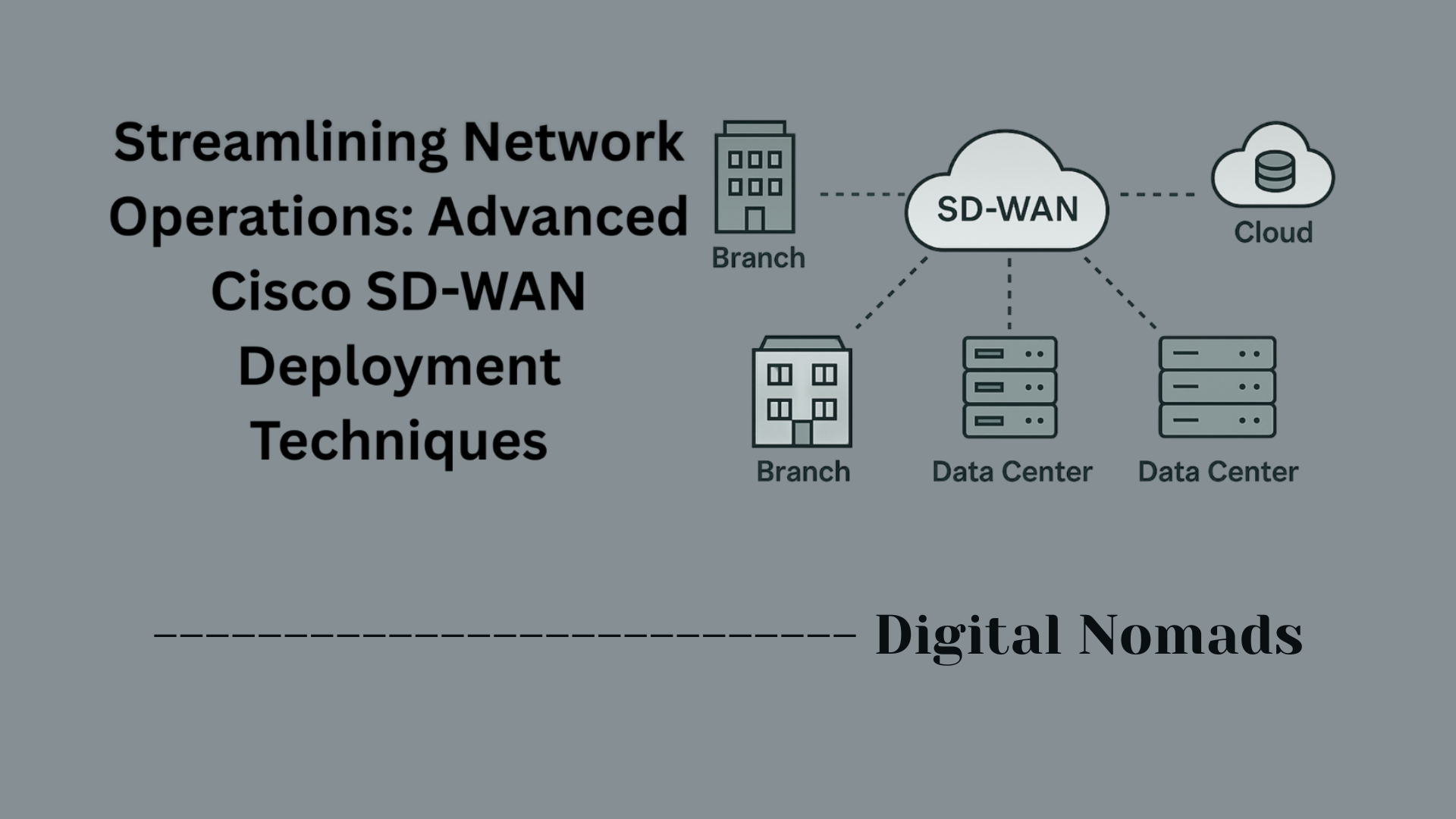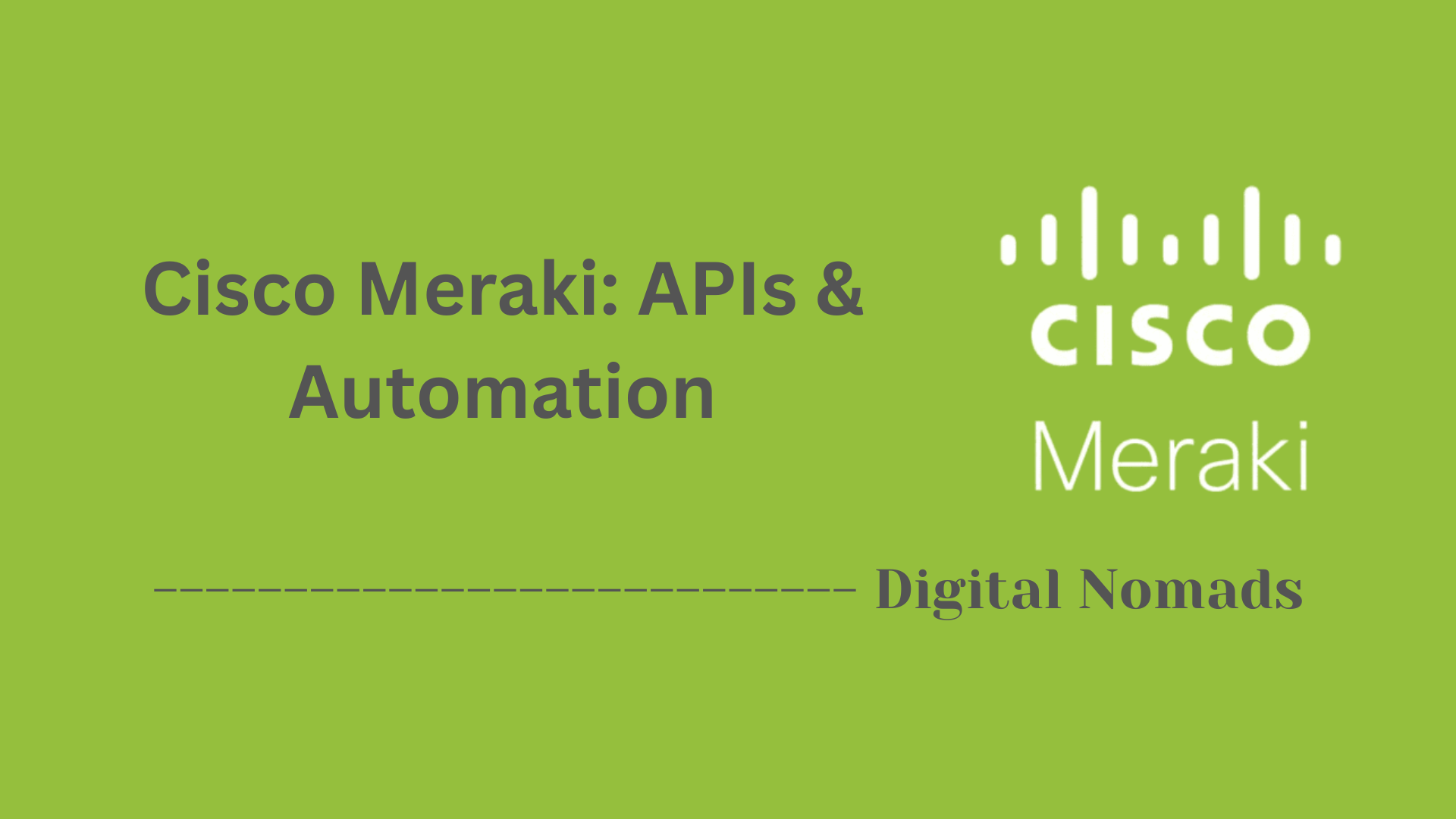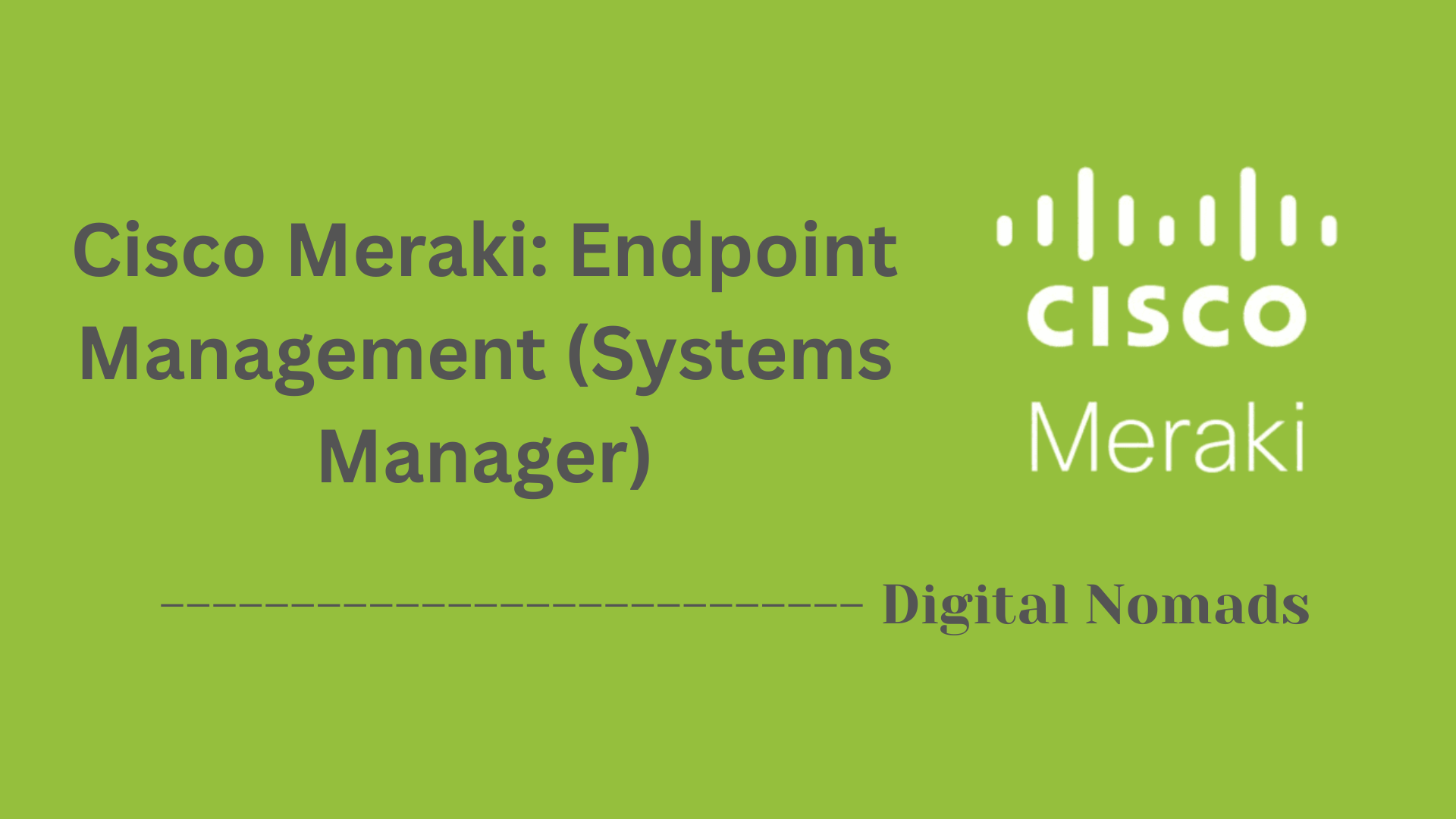Table of Contents
- Overview
- Key Terms
- Redundancy Features in Cisco Switches
- High Availability Designs
- Best Practices Checklist
- Example Configurations
- Troubleshooting Tips
- Common Issues and Solutions
- Conclusion
Overview: Cisco Switches – Redundancy & High Availability
What Is It?
Redundancy and high availability in Cisco switches refer to architectural strategies and technologies designed to keep your network running with minimal or zero downtime. The goal is to ensure that if one network component fails—whether it’s a switch, cable, power supply, or even a software process—another component seamlessly takes over, maintaining uninterrupted network services.
At the heart of these approaches are Cisco’s proven technologies, like StackWise (for stacking switches as a single logical unit), protocols such as HSRP and VRRP (for gateway redundancy), hardware solutions including dual power supplies and redundant supervisors, and software mechanisms like Stateful Switchover (SSO) and Nonstop Forwarding (NSF).
Why Do You Need to Know About It?
- Business Continuity: In modern organizations, network downtime can halt business operations, disrupt user productivity, and even impact customer satisfaction or revenue.
- Critical Infrastructure: Applications like VoIP, cloud access, and enterprise resource planning are highly dependent on network reliability.
- Minimizing Outages: Even short interruptions can have outsized effects—loss of service, failed transactions, or compliance violations.
- Scalability and Growth: As networks scale, the risk of a single point of failure rises. Redundancy and HA designs ensure networks grow without increasing risk.
- Disaster Recovery: With built-in high availability, failover and recovery processes are faster and more predictable.
How Does It Work?
Redundancy and high availability solutions in Cisco switching environments operate on several layers:
- Hardware Level: Using dual, hot-swappable power supplies, redundant supervisors, and stacking technologies (like StackWise) so another unit instantly takes over if one fails.
- Link Aggregation: Technologies such as EtherChannel (LACP/PAgP) combine multiple physical links into a single, robust logical connection. If one link drops, traffic continues along another, ensuring network paths are always available.
- Protocol Level: HSRP and VRRP provide gateway redundancy by configuring a group of routers or switches to share a virtual IP address. If the active device fails, another member automatically takes over as the gateway.
- Software Resilience: Features like Stateful Switchover (SSO) and Nonstop Forwarding (NSF) enable failover with minimal or no packet loss, preserving ongoing network sessions and preventing service interruption.
- Topology Control: Spanning Tree Protocol (STP) and its enhancements prevent layer 2 loops, which are often introduced by redundant links, while optimizing failover and convergence times.
- Monitoring and Self-Healing: Cisco switches support proactive monitoring and automated failover, alerting admins and, if configured, rerouting traffic or activating backups automatically.
Overall, these methods combine to create a network that is highly reliable, resilient to failures, and capable of delivering continuous connectivity regardless of planned maintenance or unexpected hardware issues. This is essential for organizations that rely on their network as the backbone of their business operations.
Key Terms
Understand these foundational concepts when discussing Cisco Switches and their approaches to redundancy and high availability:
- Redundancy: The inclusion of extra hardware or software components within the network to ensure continuous operation and minimize the risk of downtime in case of failure.
- High Availability (HA): The design and configuration of systems to be operational and accessible for the vast majority of time, minimizing both planned and unplanned outages.
- StackWise: A Cisco proprietary technology that lets multiple switches operate as a single logical switch, increasing reliability and simplifying management.
- Hot Standby Router Protocol (HSRP): A Cisco redundancy protocol that enables automatic failover of IP traffic to an available router or switch, ensuring gateway availability for end devices.
- Virtual Router Redundancy Protocol (VRRP): An open standard protocol that enables the automatic assignment of available IP routers to participating hosts, providing gateway redundancy.
- Spanning Tree Protocol (STP): A network protocol that prevents loop occurrences in Ethernet networks by ensuring a loop-free logical topology.
Redundancy Features in Cisco Switches
Cisco switches incorporate various hardware and software features to enhance network reliability and ensure business continuity. Here are the key redundancy mechanisms commonly used:
- Dual Power Supplies: Many enterprise-grade Cisco switches support two independent power supplies. If one supply fails, the other maintains uninterrupted operation.
- Stacking (StackWise/StackWise Virtual): Enables multiple switches to be interconnected and managed as a single logical unit. Stacking provides switch-level redundancy—if one unit fails, the others continue supporting the network.
- Link Aggregation (EtherChannel): Combines multiple physical links into one logical link for both increased bandwidth and redundant paths. If a link fails, traffic seamlessly continues over the remaining links.
- Redundant Supervisor Modules: Some modular switches allow for secondary supervisory modules. The standby supervisor takes over instantly if the primary fails, ensuring that forwarding and management functionalities persist.
- Stateful Switchover (SSO) and Nonstop Forwarding (NSF): These advanced high-availability features allow critical session and protocol state to be synchronized between active and standby supervisors or switches, minimizing disruption during a failure or switchover event.
- Spanning Tree Protocol (STP) Enhancements: Redundant physical paths can cause loops; STP and its enhancements (like RPVST+) prevent loops, optimize failover times, and allow for fast network reconvergence.
Together, these features form a robust foundation for highly available network operation with minimized downtime.
High Availability Designs
High availability (HA) designs in Cisco switching environments aim to minimize downtime and provide seamless network operation, even in the event of hardware or software failures. Here are the most common approaches used to achieve HA with Cisco switches:
- StackWise and StackWise Virtual: These technologies allow multiple Cisco switches to operate as a single logical unit, making it possible for traffic and control to continue uninterrupted if one switch in the stack fails.
- Dual Power Supplies: Equipping switches with two independent, hot-swappable power supplies enables continued operation if one power source fails.
- Redundant Supervisor Modules: In modular chassis switches, adding a secondary (standby) supervisor ensures network control is maintained if the primary supervisor fails, with features like Stateful Switchover (SSO) allowing for near-instant recovery.
- Link Aggregation (EtherChannel/LACP): By combining multiple physical uplinks into a single logical channel, traffic is automatically rerouted if a link goes down, improving both bandwidth and resilience.
- Spanning Tree Protocol (STP) Enhancements: Rapid Per-VLAN Spanning Tree Plus (RPVST+), Multiple Spanning Tree Protocol (MSTP), and similar enhancements reduce failover time and prevent loops in topologies with redundant paths.
- Nonstop Forwarding (NSF) & Graceful Restart: These features, especially in conjunction with SSO, ensure that traffic flows continue with minimal interruption during failures or planned switchover events.
These methods are typically combined in robust network designs to deliver high uptime and reliability. Here’s a comparison of the key options:
| Feature | How It Works | Design Benefit | Typical Use |
|---|---|---|---|
| StackWise / StackWise Virtual | Switches combine into one logical system with virtual backplane | Seamless failover, single management point | Access/distribution/core switching |
| Dual Power Supplies | Two independent, hot-swappable PSUs | Continuous operation during PSU failure | All enterprise environments |
| Redundant Supervisors | Secondary supervisor takes over if primary fails | Instantaneous control plane failover | Large campus/core/data center |
| EtherChannel / LACP | Bonds multiple uplinks into a logical interface | Redundant paths, increased bandwidth | Uplinks and trunks |
| STP Enhancements | Advanced protocols accelerate failover & loop prevention | Optimized recovery and stability | All topologies with redundant links |
| Nonstop Forwarding (NSF) & SSO | Keeps traffic flowing through failures and supervisor swaps | Extremely low downtime | Enterprise, data center, campus backbone |
By thoughtfully combining these design elements, Cisco networks can achieve high levels of availability—targeting "four nines" (99.99%) or better for business-critical environments.
Best Practices Checklist
For maximum uptime and network resilience, apply these best practices when designing and managing Cisco switch environments focused on redundancy and high availability:
- Deploy Multiple Uplinks: Ensure each switch has at least two physical uplinks to separate upstream devices or switches for path redundancy.
- Implement Gateway Redundancy: Use protocols such as HSRP or VRRP to deliver seamless default gateway failover for end devices.
- Utilize Stacking or StackWise Technology: Where possible, stack access or core switches for simplified management and switch-level hardware failover.
- Regularly Test Failover Scenarios: Schedule and document tests of redundant paths, failover mechanisms, and backup systems to ensure rapid recovery.
- Power Redundancy: Connect redundant power supplies to separate electrical circuits to reduce risk of outages from power-related events.
- Monitor Key Metrics and Log Events: Proactively monitor logs, link status, stacking health, and power modules for issues and early-warning signs.
- Keep Firmware Updated: Regularly update switch IOS/firmware to incorporate reliability, security, and high-availability enhancements.
- Maintain Comprehensive Documentation: Record network diagrams, failover designs, and emergency procedures to accelerate troubleshooting and recovery.
By following this checklist, organizations can greatly reduce downtime risks and ensure their Cisco switching infrastructure is highly available and resilient to failures.
Example Configurations
Below are common configuration examples used to enable redundancy and high availability on Cisco switches. These cover features such as EtherChannel, HSRP, StackWise, and supervisor redundancy.
-
EtherChannel (Link Aggregation):
interface range GigabitEthernet1/0/1 - 2 channel-group 1 mode activeThis configuration combines multiple physical interfaces into one logical channel using LACP, providing bandwidth increase and link redundancy.
-
HSRP (Hot Standby Router Protocol):
interface Vlan10 standby 1 ip 192.168.1.1 standby 1 priority 110 standby 1 preemptThis setup creates a virtual gateway using HSRP, ensuring one switch/router is always available as the default gateway for clients[5].
-
StackWise (Switch Stacking):
! Hardware: Connect StackWise cables per Cisco hardware guide ! Verification: show switch stack-ports show switchConnect stacking cables and verify the stack to enable resilient, unified management and hardware failover.
-
Supervisor Redundancy (Stateful Switchover):
redundancy mode sso main-cpu auto-sync standardEnables stateful switchover between active and standby supervisor modules, ensuring uninterrupted network operation on failure[1][4].
-
Verify Redundancy & High Availability:
show redundancy status show standby show etherchannel summaryThese commands help check current state and health of redundancy features for troubleshooting and validation[1][4].
Adjust configuration for your particular switch model and deployment scenario. Refer to Cisco documentation for advanced options and troubleshooting.
Troubleshooting Tips
When configuring and managing Cisco switches for redundancy and high availability, systematic troubleshooting ensures rapid recovery from faults and minimizes downtime. Use these practical tips to pinpoint and resolve common issues:
-
Verify Link and EtherChannel Status:
show etherchannel summary
Check that all member links in EtherChannel groups are active and properly bundled. Investigate any ports flagged as inactive or misconfigured. -
Check Switch and Stack Health:
show switch
show switch stack-ports
Confirm all expected switches are present in the stack and stack ports are up. Mismatched or absent switches may indicate cabling or compatibility issues. -
Monitor Gateway Redundancy (HSRP/VRRP):
show standby
show vrrp
Examine group status, priorities, and active/standby roles. Issues with failover may stem from interface errors, subnet mismatches, or preempt settings. -
Review Spanning Tree State:
show spanning-tree
Investigate for unexpected topology changes, blocked ports, or root bridge issues that could signal loops or misconfigured redundancy. -
Inspect Power Supply Redundancy:
show power
Ensure both primary and secondary power supplies are detected and operational. Replace any failed PSU promptly and check circuit separation. -
Monitor Redundant Supervisors (If Present):
show redundancy status
Verify both active and standby supervisors are healthy, synchronized, and ready to take over if needed. -
Analyze Logs and Syslog Messages:
Regularly review
show loggingfor hardware failures, detected loops, or flapping interfaces. Address recurring or critical messages swiftly. - Confirm Configuration Consistency: Compare running and startup configurations for discrepancies that may impact redundancy or failover.
By using these troubleshooting commands and techniques, you can quickly isolate and address high availability issues in Cisco switch environments, maintaining network resilience and uptime.
Common Issues and Solutions
While Cisco switches offer robust redundancy and high availability, certain issues can still arise during deployment or operation. Below is a guide to frequently encountered problems and effective solutions:
| Issue | Possible Cause | Solution |
|---|---|---|
| Switch Not Joining Stack | StackWise cable is faulty or mis-connected; Switch priorities are mismatched; Incompatible firmware versions. |
Check physical cabling and reseat; Set correct stack priority; Ensure all switches are running compatible firmware versions. |
| HSRP/VRRP Failover Does Not Occur | Misconfigured HSRP/VRRP group; Interfaces down; Preemption not enabled on higher-priority device. |
Confirm group numbers, priorities, and IPs match on both devices; Enable necessary interfaces; Use standby preempt for HSRP or vrrp preempt for VRRP.
|
| Spanning Tree (STP) Loops or Slow Convergence | Redundant paths not properly managed; STP enhancements not enabled; Incorrect port roles or priorities. |
Enable RPVST+ or MSTP for faster reconvergence; Adjust bridge and port priorities; Remove unnecessary redundant links. |
| EtherChannel Bundle Fails | Inconsistent port configurations; Mode mismatch (active/passive); Different VLAN membership. |
Verify all ports are set identically on each side; Match LACP or PAgP mode; Ensure VLAN assignments are consistent. |
| Power Supply Failure | Single PSU is faulty; Both PSUs on same power source. |
Replace failed power supply immediately; Connect redundant PSUs to different power circuits. |
| Supervisor Switchover Does Not Work | Standby supervisor not in 'hot' state; Configuration not synchronized. |
Check show redundancy status for supervisor state;Enable config synchronization with auto-sync or similar feature.
|
Applying these troubleshooting steps for each issue promotes smoother switch operation, reduces downtime, and ensures network high availability.
Conclusion
Throughout this blog post on Cisco Switches: Redundancy & High Availability, we've explored how to build resilient network infrastructures that minimize downtime and support business continuity. Let's recap some of the key takeaways:
- Redundancy is about creating backup pathways, power sources, and processing units to ensure a switch failure doesn’t mean a full network outage.
- High Availability (HA) design involves technologies like StackWise, HSRP/VRRP, and EtherChannel to maintain continuous access to essential services and minimize disruptions.
- Cisco offers powerful tools like Stateful Switchover (SSO), Nonstop Forwarding (NSF), and Spanning Tree enhancements that optimize failover times and maintain data flows during maintenance or outages.
- Implementing dual power supplies, stacking, redundant supervisors, and gateway failover are best-practice strategies every network should adopt for critical infrastructure.
- The provided configuration examples and troubleshooting commands help bridge theory with real-world deployment—ensuring you're well-equipped to manage and recover from faults.
- Finally, the common issues and solutions section helps prepare you for frequent hurdles and how to handle them quickly and effectively.
Redundancy and high availability aren’t just for large enterprises—they’re essential building blocks for any organization that’s serious about maintaining uptime and safeguarding operations.
Thanks for following along! We hope this guide has given you a clear foundation to strengthen your Cisco network designs. Best of luck in architecting rugged, reliable infrastructures—and may your uptime always stay high! 👍🚀




